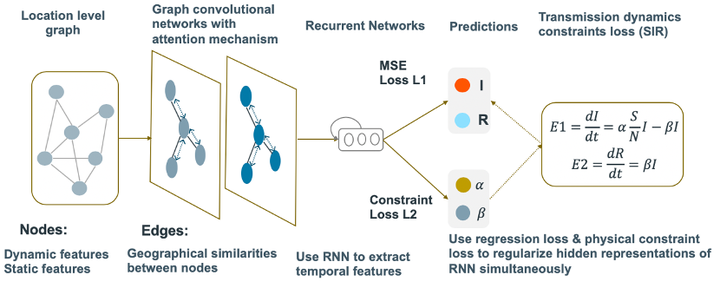STAN: Spatio-Temporal Attention Network for Pandemic Prediction Using Real World Evidence

Abstract
Objective: The COVID-19 pandemic has created many challenges that need immediate attention. Various epidemiological and deep learning models have been developed to predict the COVID-19 outbreak, but all have limitations that affect the accuracy and robustness of the predictions. Our method aims at addressing these limitations and making earlier and more accurate pandemic outbreak predictions by (1) using patients’ EHR data from different counties and states that encode local disease status and medical resource utilization condition; (2) considering demographic similarity and geographical proximity between locations; and (3) integrating pandemic transmission dynamics into deep learning models.
Materials and Methods: We proposed a spatio-temporal attention network (STAN) for pandemic prediction. It uses an attention-based graph convolutional network to capture geographical and temporal trends and predict the number of cases for a fixed number of days into the future. We also designed a physical law-based loss term for enhancing long-term prediction. STAN was tested using both massive real-world patient data and open source COVID-19 statistics provided by Johns Hopkins university across all U.S. counties.
Results: STAN outperforms epidemiological modeling methods such as SIR and SEIR and deep learning models on both long-term and short-term predictions, achieving up to 87% lower mean squared error compared to the best baseline prediction model.
Conclusions: By using information from real-world patient data and geographical data, STAN can better capture the disease status and medical resource utilization information and thus provides more accurate pandemic modeling. With pandemic transmission law based regularization, STAN also achieves good long-term prediction performance.